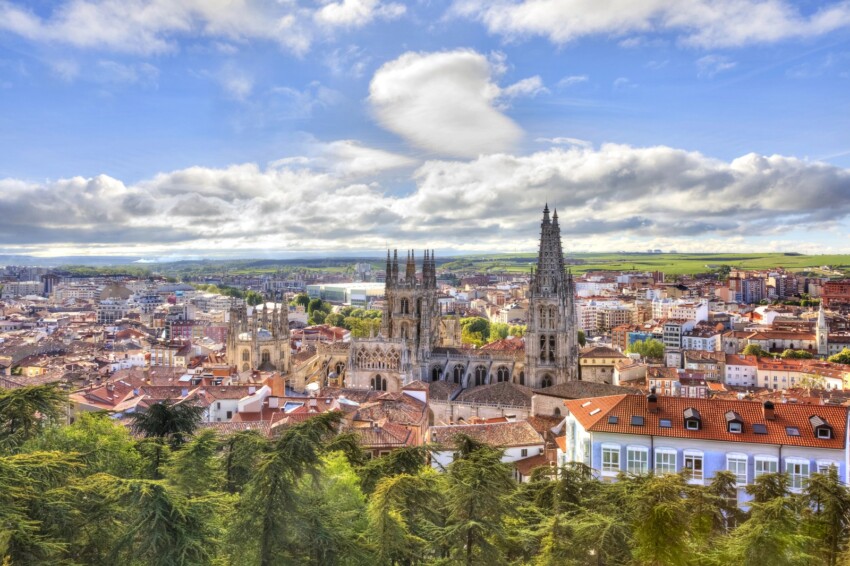

Capital of Castilla y Léon, an inland Spanish region where wheat and sunflower fields cover green hills and plains, Burgos is a city that combines medieval splendour, rural landscapes and typical Spanish joviality.
Its tourist fame is linked to its magnificent Cathedral, one of the most beautiful churches in all of Spain and one of the most representative examples of Spanish Gothic, and its strategic location along the Camino de Santiago, which makes it one of the possible starting points for those who do not want to or cannot make the full 800-plus kilometres of the historic pilgrimage.
Without leaving the city, you can take fascinating walks in search of the Spanish Gothic masterpieces and the other splendid palaces, churches and monuments that tell the city’s long history, or relaxing strolls along the river.
Add to this a local cuisine full of tasty traditional specialities and excellent wines produced in the area, an original museum with ancient artefacts found at a nearby palaeontological site and the echo of the heroic deeds of the Cid Campeador and you will wonder why Burgos is not on the top list of the most visited cities in Spain.
Although not one of Spain’s most famous tourist cities, Burgos is packed with museums, monuments and attractions and is perfect for a day trip or a longer stopover. Here is a list of the must-sees.
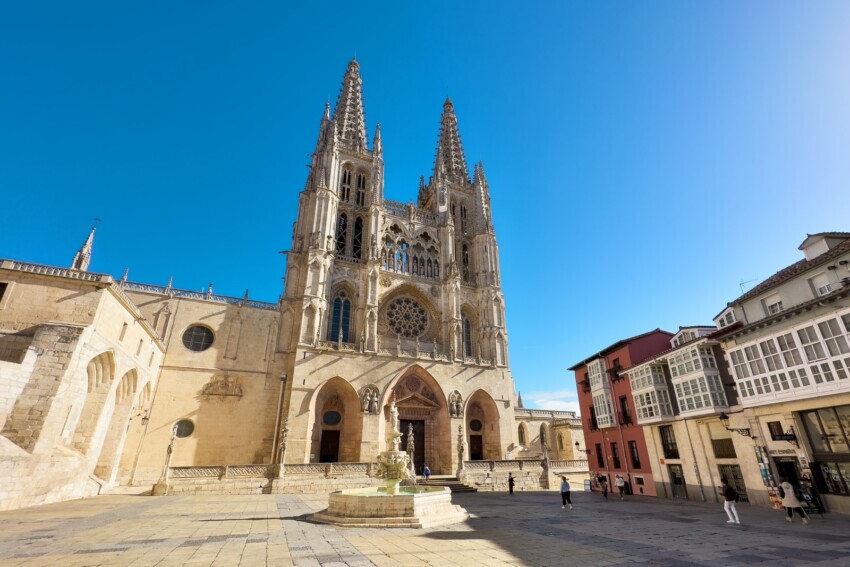
The top attraction in Burgos is the splendid Cathedral, one of the finest examples of Spanish Gothic architecture and a Unesco World Heritage Site. Its construction took no less than five centuries: it began in 1221 and continued until the 18th century, which explains the mixture of different styles within a building that is Gothic in design.
The church is a riot of artwork and decoration and the overall effect is elegant and harmonious. It is hard to say what the highlight of this splendid building is, so visit the cathedral at your leisure and don’t miss its most precious treasures, which are listed below:

Need energy to start your visit to the centre of Burgos? Sip a coffee at one of the cafés with outdoor tables in the Plaza Mayor, the nerve centre of city life and the best place from which to explore the city.
Vaguely hexagonal in shape, it is a large square of no less than 6000 m2 lined with shops, bars and restaurants. A popular meeting place for the citizens of Burgos, it is perfect for relaxing and lazily watching people go by.
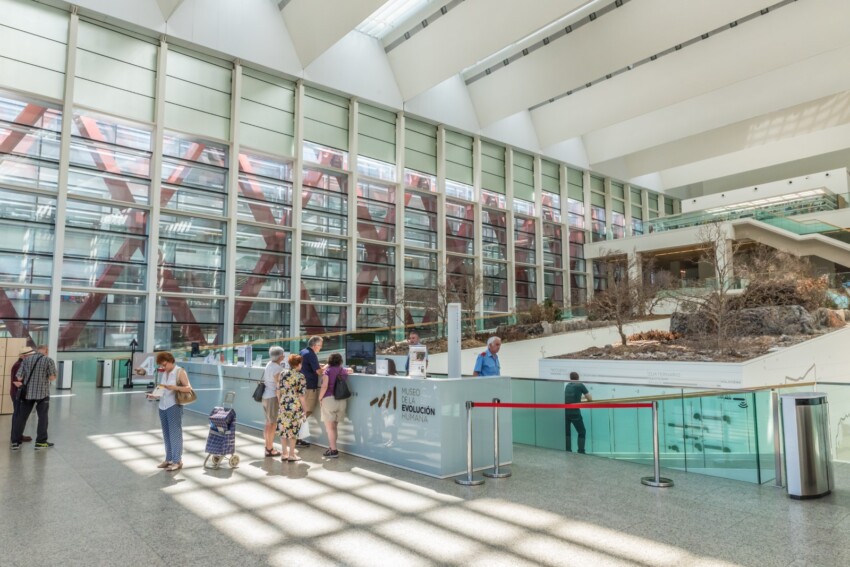
Housed in a modern building on the south bank of the Arlanzón River, the original and well-kept Museum of Human Evolution (Museo de la Evolución Humana in Spanish) is a fascinating excursus from the origins of human life to the present day.
As you ascend and explore the different floors of the museum, you will discover how Homo antecessor and Homo sapiens evolved into what we are today. The exhibition includes a mix of historical exhibits and multimedia information panels.
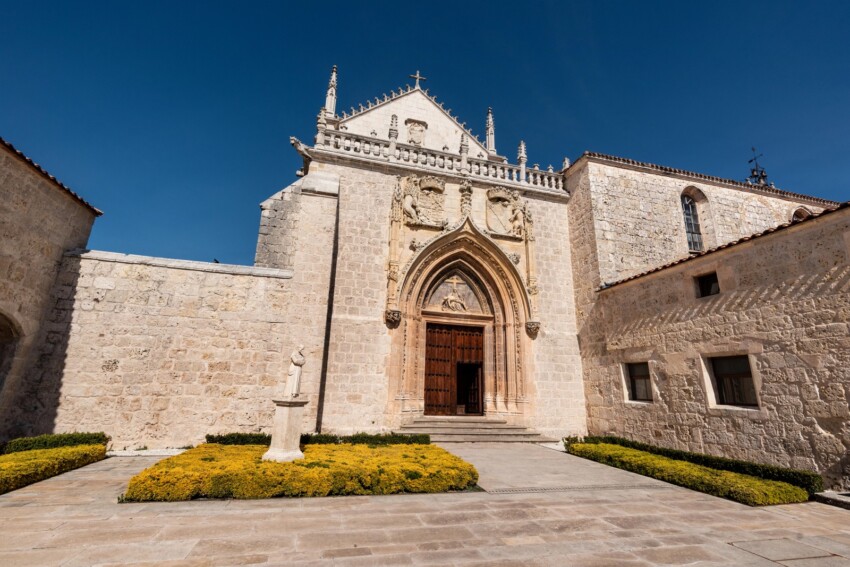
Another Gothic masterpiece in Burgos is the Carthusian Monastery of Miraflores (Cartuja de Miraflores in Spanish), a monastery nestled in a forest 4 km walk from the centre. It can be reached in about an hour with a pleasant walk along the Arlanzón river.
Before being used as a church, the building was the holiday residence of King Henry III, built on the king’s hunting estate. The architectural features that turned the church into a Gothic jewel are later: they were added in the late 15th century.
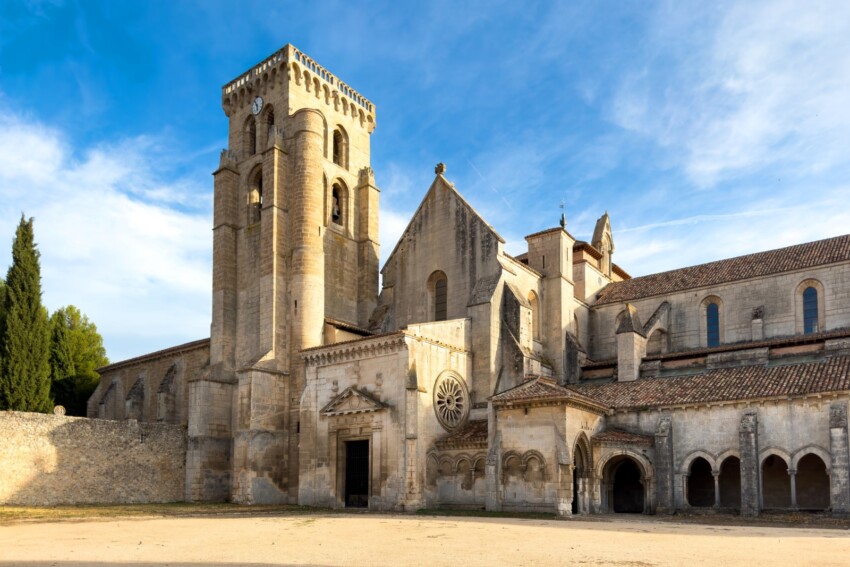
If you are willing to take another walk along the river (only half an hour this time), you can visit another interesting religious building whose full name is Abbey of Santa Maria Real de las Huelgas.
Founded by Eleanor of Aquitaine, the wife of King Alfonso VIII, this complex was designed as a spiritual retreat for noble ladies and currently comprises a church and a monastery with cloistered accommodation protected by a crenellated enclosure.
The monastery is still in operation today and houses around 30 Cistercian nuns, so you can visit it on a guided tour. You can admire the tombs of kings and queens, a magnificent gilded altar, a Romanesque-style cloister and the Museo de Ricas Telas, which exhibits sumptuous royal and religious robes.
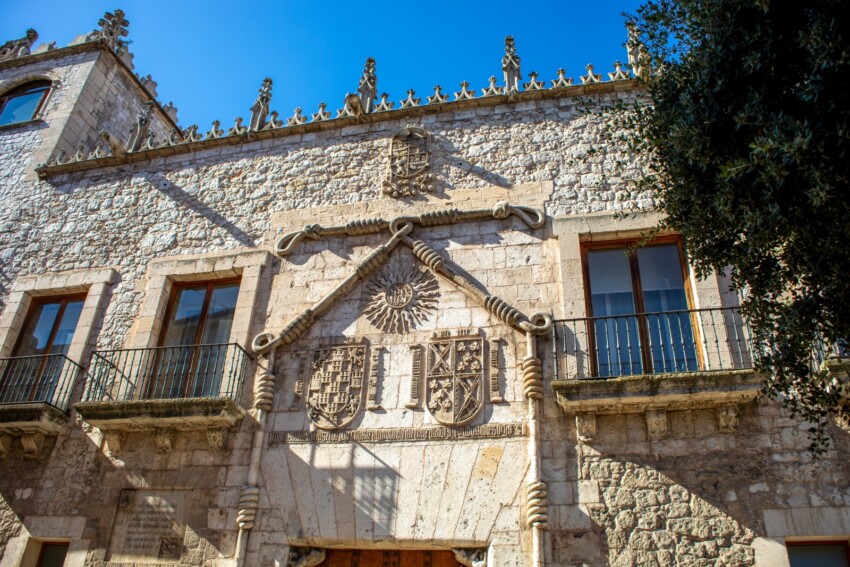
It currently houses a bank, so the interior is of little interest to tourists, but the Casa del Cordón is one of the most emblematic civil buildings in Burgos. The house was built in the 15th century to a design by Simon de Colonia.
Numerous events of historical importance have taken place within its walls, including the meeting between the Catholic Monarchs and Christopher Columbus on his return from his second voyage to the Americas and the cortés of 1515, the political assembly that decreed the union between the Kingdom of Navarre and that of Castile.
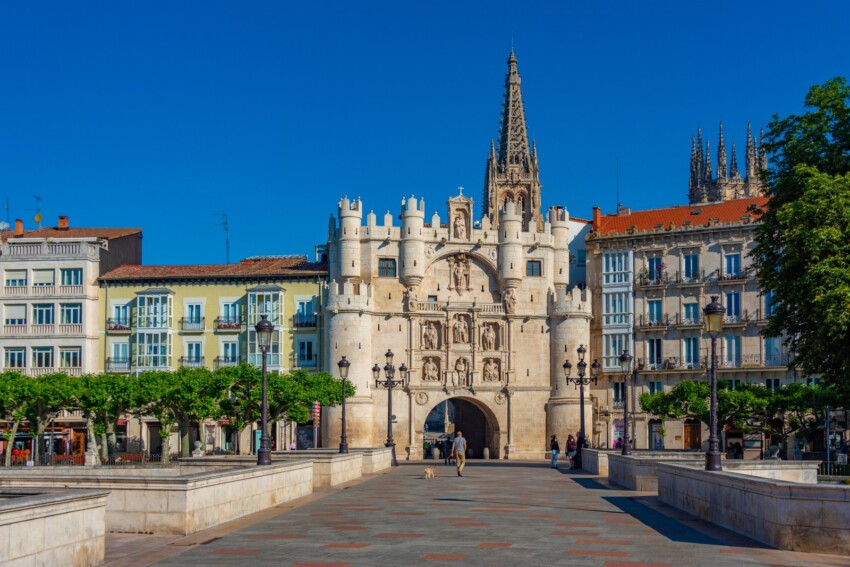
The Arch of Santa María is one of the best-preserved monumental gates in the ancient city walls. Built in the 14th century and remodelled in the 16th, this triumphal arch served as the main entrance to the city and is decorated with statues of the most important figures in the history of Burgos, including judges, counts and kings.
The building now houses an exhibition centre and offers a privileged view of the cathedral façade. Its towers and battlements recall the city’s military past, while its Renaissance decorations testify to the artistic heyday of Burgos.
If you have enough time for an in-depth visit of Burgos, make sure to take note of other interesting attractions:
In the following map you can see the location of the main places of interest mentioned in this article.
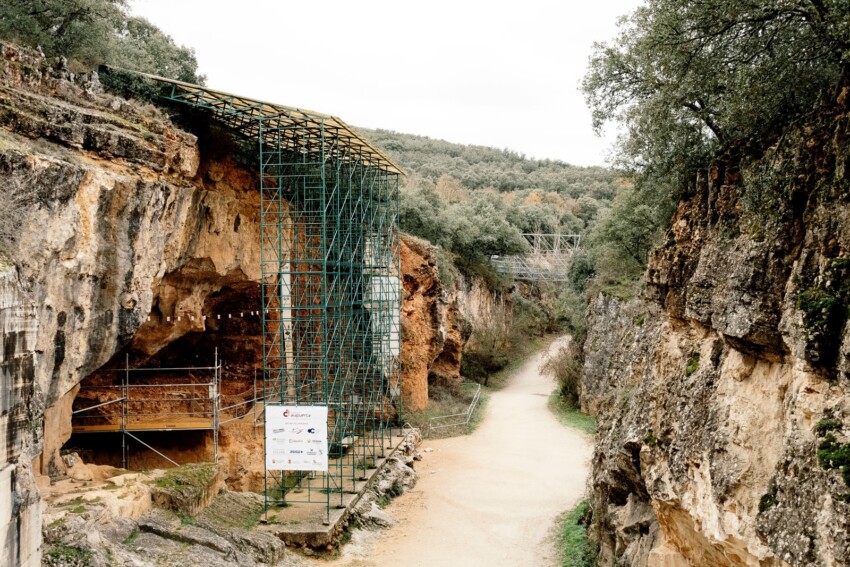
The strategic location of Burgos makes it easy to explore the natural and cultural beauty of the region. Renting a car is recommended for maximum flexibility.
A not-to-be-missed attraction less than 20 kilometres from Burgos is the paleontological site of Atapuerca, where ancient human bones of around 30 people of different ages and sexes were found, allowing us to refine our knowledge of our ancestors and the history of evolution.
Some of the artefacts found at Atapuerca are on display at the Museum of Evolution, but if you have time, go and visit the excavation site: the setting of the archaeological park, surrounded by greenery, and the exciting story of the finds are worth the time of the trip and the price of the ticket. Convenient combined tickets are available for the palaeontological site and the Museum of Evolution.
The Monastery of Santo Domingo de Silos, 60 km from Burgos, is famous for its Romanesque cloister with richly carved capitals and the Gregorian chants of the Benedictine monks. The monastery, which is still active, offers the possibility of attending religious services and listening to the famous monastic choir.
The picturesque medieval village of Covarrubias, 40 km from Burgos, is one of the most beautiful in Spain. Its half-timbered houses, Gothic collegiate church and Fernán González palace offer a perfectly preserved cross-section of medieval Castile. The village is also known for its traditional gastronomy.
The ducal city of Lerma, 40 km from Burgos, is a jewel of Spanish Baroque architecture. Its imposing ducal palace, now a national parador, dominates the arcaded main square. The city has numerous 17th-century churches and convents that testify to its glorious past.
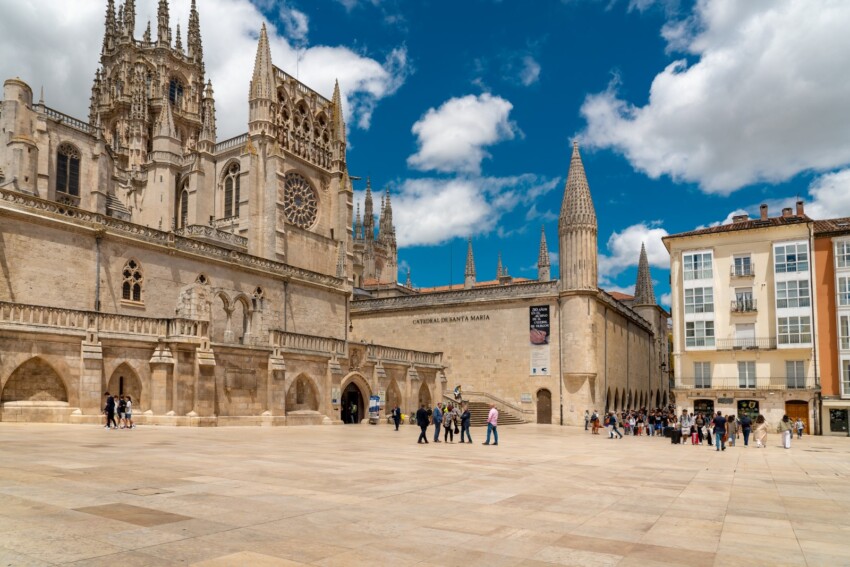
For low-cost travellers Burgos is an ideal destination: being an important stop on the Camino de Santiago, which not a few pilgrims and trekkers choose as the starting city of their walking route to Galicia, it has a wide choice of budget hotels and hostels.
Those who want more comfort can choose from hotels, b&b’s and flats in the medium price range, which, although they cost a little more, are still inexpensive compared to accommodation in other, more touristy Spanish towns.
There is no shortage of 4- and 5-star hotels for those who enjoy luxury and comfort, including some with outdoor swimming pools. There are hotels of famous international chains in the city that guarantee excellent standards of quality but are a little impersonal. If you have a car, we recommend sleeping just outside the city in a charming hotel in the countryside.
Burgos has a small airport served only by national flights.
The easiest and cheapest way to get to Burgos is to fly to Madrid, a city served by many direct low-cost flights. From Madrid you can easily get to Burgos by rental car or direct bus. The bus journey time is about two and a half hours.
Other cities that are well connected to Burgos by fast roads or bus routes are Santander and Bilbao, which you can consider as an alternative arrival airport to Madrid if you find a cheap flight offer. Bilbao is closer (less than two hours by bus), while from Santander the journey time is about two and a half hours as from Madrid.
What's the weather at Burgos? Below are the temperatures and the weather forecast at Burgos for the next few days.
Burgos is located in the Castilla Leon region, not far from the border with the Basque Country. In fact, it takes less than two hours to reach Bilbao.